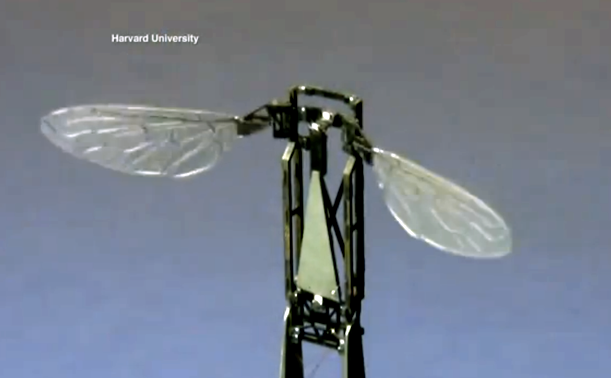Biomimetic Design Means We’ll All Be Living A Bug’s Life
Researchers and designers looking to nature for inspiration have literally one million reasons to reveal the secrets of insects
/https://tf-cmsv2-smithsonianmag-media.s3.amazonaws.com/filer/20130826094039firefly-470.jpg)
When I was a kid I had a “bug box” – a small, homemade container built from wire mesh and a couple pieces of wood. During the summer I’d try to fill this box with lightning bugs –fireflies or glow bugs, depending on where you’re from– in the attempt to transform the small translucent container into a natural lantern full of the insects whose biological incandescence was nothing less than a minor miracle. It never quite worked as I imagined. In, retrospect, the whole endeavor seems like a fantasy fueled by too many cartoons.
Or perhaps not.
Recently an international team of researchers looked to the firefly for inspiration in designing more efficient lighting. Building on previous research into the chemical reactions that powered the glow bugs’ glow, the team focused on the insect’s exoskeleton, which features unique shingle-like surfaces that reduce internal reflection, thereby allowing more light to escape. Using lasers to recreate the shingle shapes on the surface of an LED, the researchers were able to create a 55% more efficient LED. This is only one of the many, many ways that insect biomimicry is improving our products and our lives.
Biomimicry is a design principle that looks to reproduce systems, behaviors, or effects observed in the nature. After all, what we stupid humans have been working on for a couple hundred years –at best!– nature has been developing for eons. Though it sounds high-tech, biomimicry is by no means a new field. Inventors, artists, and scientists dating back millennia have looked to nature to advance human technological prowess. Birds are perhaps the most common example, but insects, the most diverse and expansive class of animals on the planet, offer designers literally millions of opportunities to unlock innovation.

With robot and drone technology advancing — and shrinking — rapidly, flying insects are a natural model for the killing machines, surveillance swarms, and nanobots of tomorrow. Researchers at the Center for Neuroscience Research at the University of Adelaide believe that dragonflies hold a secret for improving robotic tracking and targeting. Dragonflies, you see, have developed an exceptional ability to see moving objects in the dark – making them an excellent nocturnal predator. Research leader Dr. Steven Wiederman explains it: “To perceive the edges of objects and changes in light or darkness, the brains of many animals, including insects, frogs, and even humans, use two independent pathways, known as ON and OFF channels….But what we show occurring in the dragonfly’s brain is the combination of both OFF and ON switches.” The researchers are hoping to technologically reproduce this unique visual capability, which so far has only been observed in dragonflies. There are obviously military implications for this work that could improve drone recognition and targeting capabilities but the team also aspires to more benevolent applications such as neural prosthetics that might one day help people with visual impairment.

Robo-bee, a collaboration between Harvard University electrical engineers Rob Wood and Gu-Yeon Wei, and computer scientist Radhika Nagpal (image: National Science Foundation video)

In recent years, bees have been dying and disappearing around the world. Colony Collapse Disorder, as the phenomenon is known, is a threat to the world’s food supply and a mystery that, despite much research and at least two documentaries, remains largely unanswered. In lieu of a solution, a team of Harvard scientists are looking for an alternative. Enter RoboBee, which is exactly what it sounds like: a robot modeled after the performance and behaviors of the honey bee. When complete, RoboBees will fly like bees, operate in unison like a colony, and most importantly, pollinate. But the potential for hive-mind robot insects is much greater. For example, such technology could be used in search and rescue efforts following disasters. Of course, that’s all much easier said than done. But advancements have been made. By looking at the movement of other flying insects, the RoboBee team have so far been able to create a nickel-sized machine capable of basic flight and they hope to see it swarming in five to ten years. This of course means that five to ten years after that, the RoboBee empire will have conquered Earth. Don’t say you weren’t warned.
Until that fateful day, biomimicry will continue to keep our lights bright, our planes in the air, our plants pollinated, and generally improve the quality of everyday life. Although I probably won’t have my bug-powered lantern anytime soon.
/https://tf-cmsv2-smithsonianmag-media.s3.amazonaws.com/accounts/headshot/Jimmy-Stamp-240.jpg)
/https://tf-cmsv2-smithsonianmag-media.s3.amazonaws.com/accounts/headshot/Jimmy-Stamp-240.jpg)